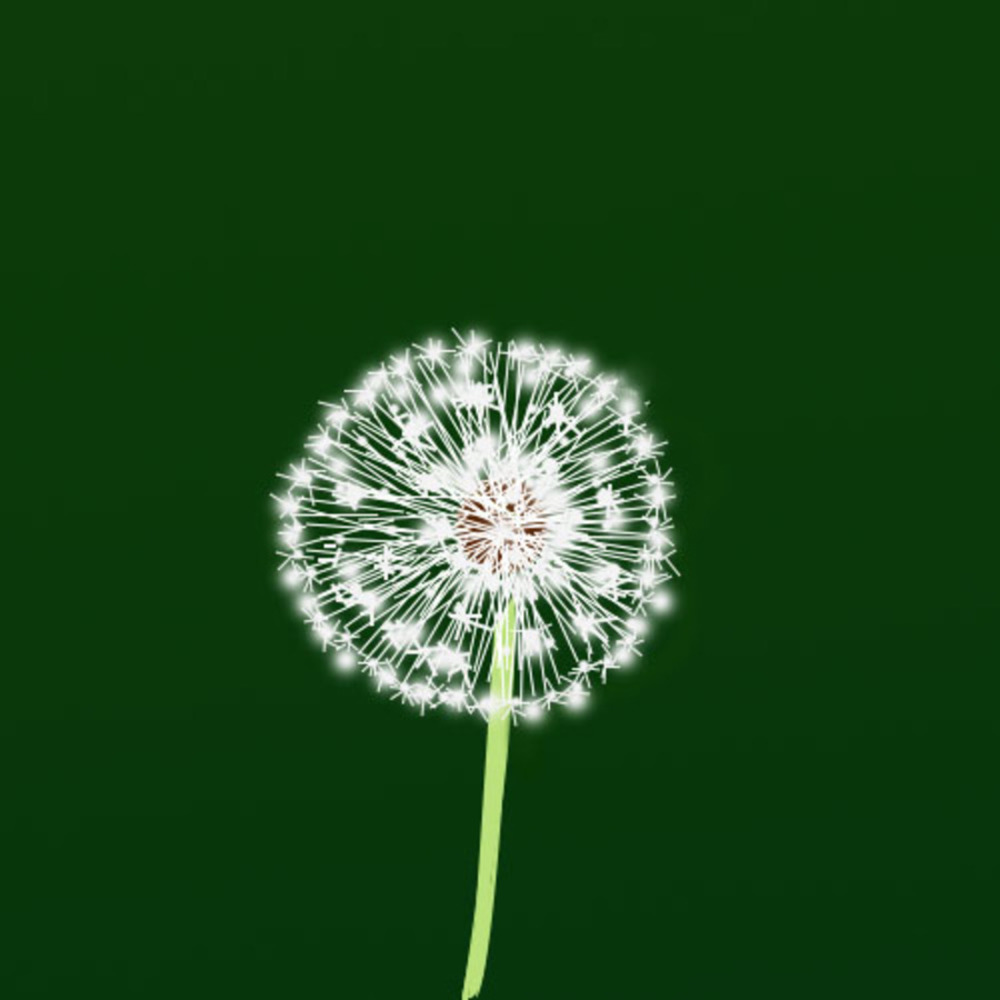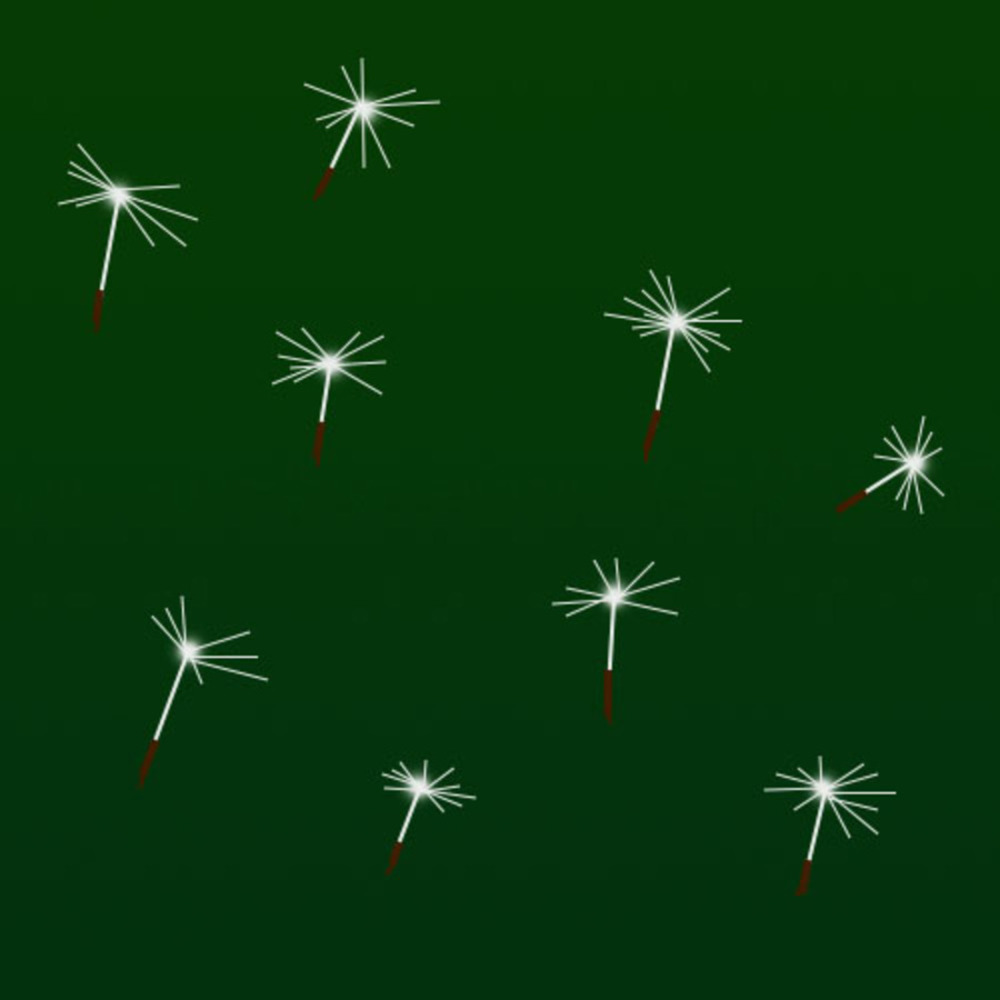Dondis says that “[u]nity is a proper balance of diverse elements into one totality that is visually all of a piece. . . Fragmentation is the breaking up of the elements and units of a design into separate pieces that relate but retain their own individual character.”
For this assignment, I chose to work with unity and fragmentation since I find it particularly interesting how basically everything is made up of many, many elements, that together unify to form something but also can be considered individually. My inspiration from nature is the dandelion. This seems especially fitting for the “unity and fragmentation” theme since I remember watching dandelion seeds detach from the flower and fly away many times when I was younger.
Unity
My first composition, which represents unity, shows the dandelion as a whole. My representation is fairly abstract since it is composed of only lines, dots, and circles which give the impression of a simplified, flattened form of a dandelion. I chose a green background for both compositions, since I felt that provided a good contrast to the whitish-gray of the seeds, and the brown center of the flower. A circle for the center, and then simple lines and dots provide the structure of the flower. All the seeds are together to form a single flower, all joined at the center. I made sure to center this image to provide a sense of balance, and avoid throwing off the feeling of unity. I want the viewer to consider the flower as a whole, not be wondering why the image doesn’t feel centered.

